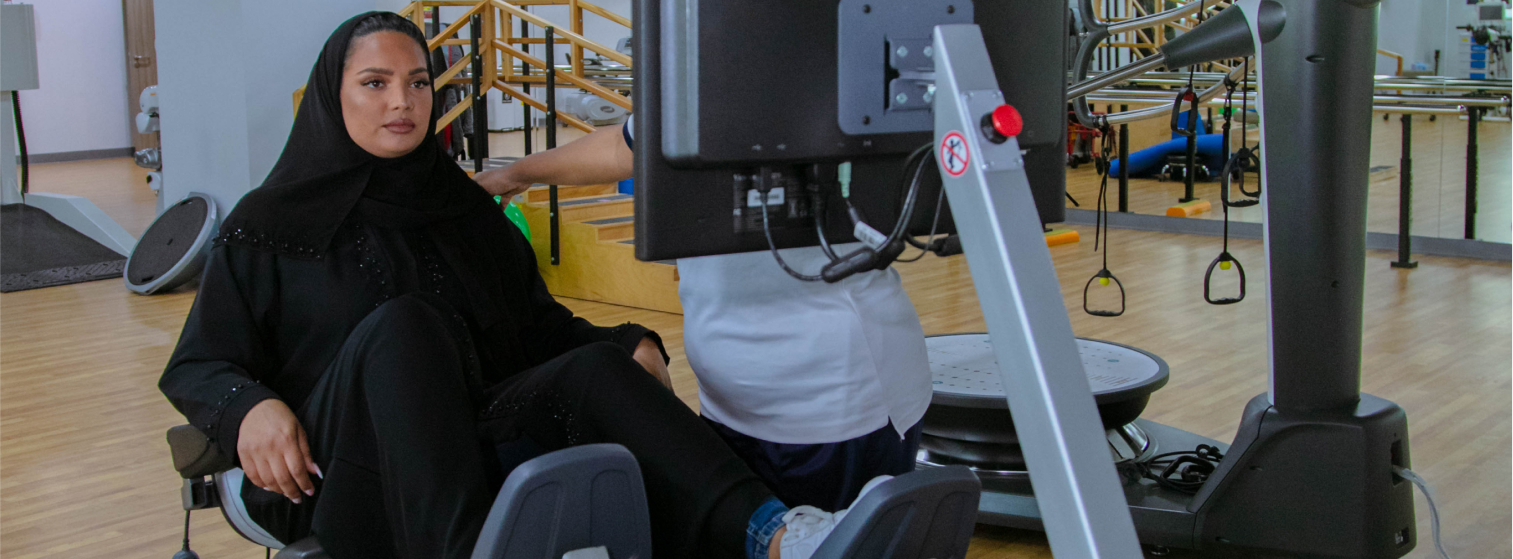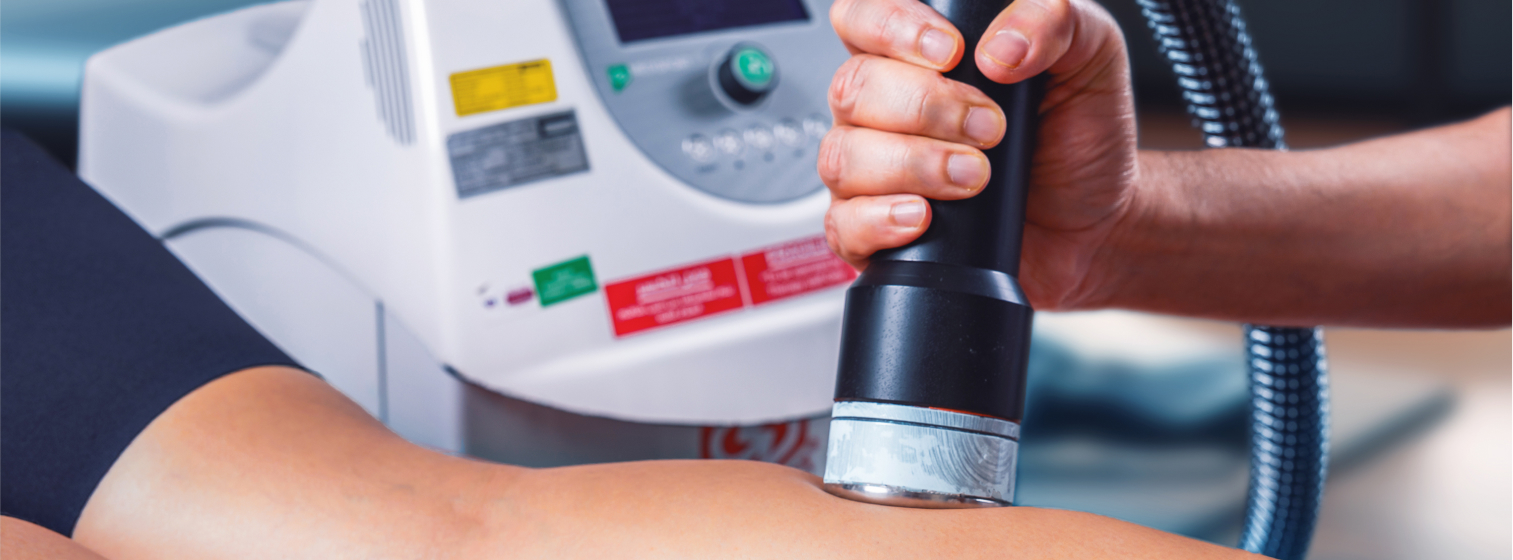No Image
Archives: Services

Fitness Education and Advice
Significance of Fitness Education and Advice
Empowerment through Knowledge
Fitness education equips individuals with essential information about exercise physiology, nutrition principles, and lifestyle factors that influence health and fitness outcomes. By understanding the science behind fitness and wellness, individuals can make informed choices and take ownership of their health.
Behavior Change
Fitness advice provides practical strategies and behavior change techniques to help individuals adopt and maintain healthy habits. Whether setting realistic goals, overcoming barriers to exercise, or managing stress, fitness professionals offer guidance and support to facilitate positive lifestyle changes.
Injury Prevention
Fitness education emphasizes proper exercise techniques, safety guidelines, and injury prevention strategies to reduce the risk of exercise-related injuries and promote safe participation in physical activity. By learning how to exercise safely and effectively, individuals can minimize the likelihood of injuries and sustain long-term fitness success.
Optimal Performance
Fitness advice helps individuals optimize their exercise routines, nutrition plans, and recovery strategies to enhance athletic performance and achieve fitness goals. Whether training for a specific sport or improving overall fitness, personalized guidance and expert advice can maximize performance outcomes.
Long-Term Health and Well-being
By adopting a holistic approach to fitness education, individuals can improve their overall health and well-being, reduce the risk of chronic diseases, and enhance quality of life. Incorporating regular exercise, healthy eating habits, stress management techniques, and adequate rest promotes long-term health and vitality.
Approaches to Support Fitness Education and Advice
Comprehensive Assessment
Undergo a thorough evaluation by a qualified fitness professional, such as a certified personal trainer or exercise physiologist, to assess your current fitness level, health status, and wellness goals. This assessment serves as the foundation for developing personalized fitness education and advice.
Goal Setting
Collaborate with your fitness professional to establish realistic and achievable fitness goals based on your individual preferences, needs, and aspirations. Goal setting provides direction and motivation for your fitness journey and guides the development of personalized strategies and action plans.
Education and Guidance
Engage in fitness education sessions and receive personalized guidance from fitness professionals on exercise principles, nutrition strategies, lifestyle modifications, and behavior change techniques. By learning practical skills and evidence-based strategies, individuals can make informed decisions and implement sustainable changes.
Skill Development
Participate in skill-building activities, such as exercise demonstrations, movement assessments, and technique workshops, to improve exercise proficiency and enhance safety and effectiveness during workouts. Developing proper exercise form and techniques minimizes the risk of injuries and maximizes fitness outcomes.
Support and Accountability
Seek ongoing support and accountability from fitness professionals, peers, or support networks to stay motivated, track progress, and overcome challenges encountered along the fitness journey. Regular check-ins, progress assessments, and feedback sessions provide encouragement and reinforcement of positive behaviors.

Exercise Therapy
Significance of Exercise Therapy
Functional Improvement
Exercise therapy focuses on enhancing functional abilities, such as walking, lifting, bending, and reaching, to promote independence and participation in daily activities. By targeting specific movement patterns and muscle groups, exercise therapy restores mobility and improves overall physical function.
Pain Reduction
Regular participation in targeted exercises helps alleviate pain and discomfort associated with musculoskeletal injuries, chronic conditions, and degenerative disorders. Through strengthening, stretching, and conditioning exercises, exercise therapy reduces pain intensity and improves pain tolerance, leading to enhanced comfort and well-being.
Rehabilitation and Recovery
Exercise therapy plays a crucial role in the rehabilitation process, facilitating recovery from injuries, surgeries, or neurological impairments. By promoting tissue healing, restoring range of motion, and rebuilding strength and endurance, exercise therapy accelerates recovery and improves functional outcomes.
Prevention of Functional Decline
Exercise therapy serves as a preventive measure against functional decline and loss of mobility, particularly in older adults or individuals with chronic health conditions. By maintaining muscle mass, joint flexibility, and cardiovascular fitness, exercise therapy helps preserve independence and quality of life.
Long-Term Health Benefits
Regular participation in exercise therapy offers numerous long-term health benefits, including improved cardiovascular health, bone density, metabolic function, and mental well-being. By incorporating exercise into daily routines, individuals can promote overall health and vitality, reduce the risk of chronic diseases, and enhance longevity.
Approaches to Support Exercise Therapy
Comprehensive Assessment
Undergo a comprehensive evaluation by a qualified healthcare professional, such as a physical therapist or exercise physiologist, to assess your current physical status, identify any limitations or impairments, and establish specific goals for exercise therapy.
Individualized Exercise Program
Collaborate with your healthcare provider to develop a personalized exercise program tailored to your needs, preferences, and goals. This may include a combination of cardiovascular, strength training, flexibility, and balance exercises targeted to address your unique requirements.
Gradual Progression
Begin exercise therapy with gentle and low-impact activities, gradually increasing intensity, duration, and complexity as tolerated. Progression should be gradual and monitored closely to prevent injury and ensure continued improvement over time.
Proper Technique
Perform exercises with proper form and technique to maximize effectiveness and minimize the risk of injury. Your healthcare provider can provide guidance on proper exercise technique and alignment to ensure safe and effective participation in exercise therapy.
Consistency and Adherence
Commit to regular participation in exercise therapy sessions and adhere to the prescribed program to achieve optimal results. Consistency is key to realizing the full benefits of exercise therapy and maintaining long-term functional improvements.

Mobility Training
Significance of Mobility Training
Enhanced Functional Independence
Mobility training enables individuals to perform daily activities, such as walking, standing, climbing stairs, and transferring, with greater ease and confidence. By improving mobility and physical function, individuals can maintain independence and engage in meaningful activities without reliance on others.
Fall Prevention
Mobility training includes exercises and interventions aimed at improving balance, coordination, and proprioception, reducing the risk of falls and fall-related injuries. By enhancing stability and postural control, individuals can navigate their environment safely and minimize the risk of accidents.
Improved Quality of Life
By optimizing mobility and physical function, mobility training enhances overall quality of life for individuals with mobility impairments. Increased independence, participation in activities, and social engagement contribute to greater satisfaction, well-being, and overall happiness.
Rehabilitation and Recovery
Mobility training plays a crucial role in the rehabilitation process for individuals recovering from injuries, surgeries, or neurological conditions. Through progressive exercises and interventions, mobility training facilitates recovery, restores function, and promotes return to daily activities and participation in society.
Long-Term Health and Wellness
Regular participation in mobility training promotes musculoskeletal health, cardiovascular fitness, and overall well-being. By maintaining mobility, strength, and flexibility, individuals can age gracefully, prevent functional decline, and enjoy an active and fulfilling lifestyle.
Approaches to Support Mobility Training
Comprehensive Assessment
Undergo a thorough evaluation by a qualified healthcare professional, such as a physical therapist or occupational therapist, to assess your mobility status, identify areas of strength and weakness, and determine specific goals for mobility training.
Individualized Treatment Plan
Collaborate with your healthcare provider to develop a personalized mobility training program tailored to your needs, goals, and abilities. This may include a combination of stretching, strengthening, balance, and gait training exercises, as well as the use of assistive devices or adaptive equipment.
Progressive Exercises
Engage in progressive exercises that target mobility, strength, flexibility, and coordination to gradually improve functional capacity and achieve rehabilitation goals. Begin with gentle exercises and gradually increase intensity, duration, and complexity as tolerated.
Functional Training
Incorporate functional activities and tasks into your mobility training program to simulate real-life situations and promote transfer of skills to daily activities. Practice activities such as walking on different surfaces, negotiating obstacles, and performing household tasks to enhance practical mobility.
Assistive Devices and Equipment
Utilize assistive devices, mobility aids, and adaptive equipment as needed to support mobility training and enhance safety and independence. These may include canes, walkers, wheelchairs, orthotics, and adaptive tools to facilitate mobility and improve accessibility.

Pain Relief
Significances
Multidisciplinary Approach
Pain relief is addressed through a multidisciplinary approach that may include pharmacological interventions, physical therapy, psychological support, complementary therapies, and lifestyle modifications. This comprehensive approach ensures that pain is managed effectively and holistically, considering physical, emotional, and social factors.
Individualized Treatment
Pain relief strategies are personalized to each individual’s unique needs, preferences, and underlying conditions. Healthcare providers work collaboratively with patients to develop tailored treatment plans that address the root causes of pain and optimize therapeutic outcomes.
Improved Functionality
Effective pain relief enables individuals to regain function, mobility, and independence, allowing them to engage in daily activities, work, and recreational pursuits without limitations or discomfort. By reducing pain, individuals can enhance their overall quality of life and well-being.
Enhanced Healing
Pain relief modalities not only alleviate symptoms but also promote healing and tissue repair. By targeting inflammation, improving circulation, and modulating pain signals, these interventions accelerate recovery from injuries, surgeries, and chronic conditions.
Long-Term Management
Pain relief extends beyond immediate symptom relief to encompass long-term management and prevention of pain recurrence. Through education, self-management strategies, and ongoing support, individuals learn to effectively manage their pain and optimize their health and wellness over time.
Approaches to Support Pain Relief
Comprehensive Evaluation
Undergo a thorough assessment by a healthcare provider to identify the underlying causes of pain, assess its impact on daily functioning, and develop a personalized treatment plan tailored to your specific needs and goals.
Collaborative Care
Work closely with a multidisciplinary team of healthcare professionals, including physicians, physical therapists, pain specialists, psychologists, and other specialists, to address pain from various perspectives and implement comprehensive treatment strategies.
Holistic Interventions
Embrace a holistic approach to pain relief that integrates pharmacological treatments with non-pharmacological interventions, such as physical therapy, acupuncture, massage therapy, mindfulness-based stress reduction, and nutritional counseling, to address pain from multiple angles and optimize outcomes.
Patient Education
Empower yourself with knowledge about your condition, treatment options, and self-care strategies to effectively manage your pain and make informed decisions about your healthcare. Education plays a vital role in pain relief by promoting self-awareness, self-management skills, and adherence to treatment plans.
Lifestyle Modifications
Adopt healthy lifestyle habits, such as regular exercise, proper nutrition, stress management techniques, adequate sleep, and avoidance of harmful substances, to support pain relief, enhance healing, and promote overall well-being. Lifestyle modifications complement other pain relief interventions and contribute to long-term pain management and prevention.

Electrotherapy and Taping
Significances
Pain Modulation
Electrotherapy utilizes electrical stimulation to disrupt pain signals and promote the release of endorphins, providing effective pain relief for various musculoskeletal conditions, injuries, and chronic pain syndromes. Taping techniques complement this by providing structural support and proprioceptive feedback, further alleviating discomfort and enhancing functional mobility.
Tissue Healing
Electrical stimulation facilitates tissue repair and regeneration by enhancing cellular metabolism, promoting collagen synthesis, and reducing inflammation. Taping techniques assist in offloading injured tissues, optimizing biomechanics, and reducing stress on affected areas, which promotes accelerated healing and recovery.
Neuromuscular Re-education
Electrotherapy aids in neuromuscular re-education by stimulating muscle contractions, improving muscle activation patterns, and enhancing proprioception. Taping techniques provide tactile cues and feedback to reinforce proper movement patterns, facilitating motor learning and enhancing functional performance.
Edema Management
Electrical stimulation promotes lymphatic drainage and reduces fluid accumulation in injured tissues, aiding in the resolution of edema and swelling. Taping techniques complement this by providing compression and support, facilitating fluid movement and optimizing tissue healing.
Performance Enhancement
Electrotherapy and taping can be utilized to enhance athletic performance by improving muscle strength, endurance, and coordination. These modalities help athletes prevent injuries, manage pain, and recover faster, enabling them to perform at their best.
Approaches to Support
Individualized Assessment
Undergo a comprehensive evaluation by a qualified healthcare professional, such as a physical therapist or sports medicine specialist, to assess your specific needs, goals, and condition. This evaluation will guide the development of a personalized treatment plan incorporating electrotherapy and taping techniques tailored to your unique requirements.
Customized Treatment Protocols
Collaborate with your healthcare provider to establish individualized treatment protocols, including the selection of appropriate electrotherapy modalities (e.g., TENS, NMES) and taping techniques (e.g., kinesiology taping, rigid taping), based on your diagnosis, symptoms, and treatment goals.
Precise Application
Ensure precise application of electrotherapy modalities and taping techniques by trained professionals, following established guidelines and protocols to optimize treatment effectiveness and minimize potential risks or complications.
Active Participation
Engage actively in your rehabilitation program by attending scheduled treatment sessions, following prescribed home exercise programs, and adhering to recommended lifestyle modifications or activity modifications to enhance treatment outcomes and promote long-term benefits.
Ongoing Monitoring
Maintain regular communication with your healthcare provider to monitor treatment progress, evaluate symptom changes, and address any concerns or questions regarding electrotherapy and taping techniques. Adjustments to treatment protocols can be made as needed to optimize outcomes and ensure patient satisfaction.

LASER Therapy
Significances
Pain Alleviation
Laser therapy reduces pain sensation by modulating nerve impulses and promoting the release of endorphins, providing effective pain relief for various musculoskeletal conditions, injuries, and chronic pain syndromes.
Tissue Regeneration
By enhancing cellular metabolism and promoting the production of adenosine triphosphate (ATP), laser therapy accelerates tissue healing, stimulates collagen synthesis, and reduces inflammation, particularly in soft tissue injuries and wounds.
Edema Reduction
Laser therapy facilitates the absorption of excess fluid and swelling from injured tissues, reducing edema, promoting lymphatic drainage, and improving tissue mobility and function.
Muscle Relaxation
Laser therapy provides deep penetration into muscles, promoting muscle relaxation, reducing muscle spasms, and enhancing flexibility and range of motion.
Accelerated Recovery
Laser therapy enhances the body’s natural healing processes, promoting faster recovery from injuries, surgeries, and chronic conditions, and improving overall functional outcomes.
Approaches to Support
Thorough Evaluation
Undergo a comprehensive assessment by a qualified healthcare professional, such as a physical therapist or rehabilitation specialist, to determine the appropriateness of laser therapy and customize treatment plans based on your specific needs and condition.
Customized Treatment Plans
Collaborate with your healthcare provider to develop personalized treatment plans that include laser therapy sessions tailored to your individual goals, preferences, and treatment response.
Optimal Application
Ensure precise application of laser therapy by trained professionals, adhering to established protocols for treatment duration, intensity, and frequency, to maximize therapeutic benefits and minimize potential risks.
Skin Protection Measures
Employ appropriate skin protection techniques, such as shielding healthy skin areas and using protective eyewear, to safeguard against potential adverse effects during laser therapy sessions.
Ongoing Communication
Maintain open communication with your healthcare provider to discuss treatment progress, provide feedback on symptom changes, and address any concerns or questions regarding laser therapy.
Consistent Compliance
Adhere to prescribed laser therapy protocols, attend scheduled treatment sessions regularly, and follow recommended lifestyle modifications or adjunct therapies to optimize treatment outcomes and promote long-term benefits.

Magneto Therapy
Significances
Pain Management
Magneto therapy reduces pain perception by modulating nerve impulses and blocking pain signals, providing effective pain relief for various musculoskeletal conditions, injuries, and chronic pain syndromes.
Tissue Healing
By enhancing cellular metabolism and promoting the release of growth factors, magneto therapy accelerates tissue healing, stimulates tissue repair and regeneration, and reduces inflammation and swelling, particularly in soft tissue injuries and wounds.
Edema Reduction
Magneto therapy facilitates the absorption of excess fluid and swelling from injured tissues, reducing edema, promoting lymphatic drainage, and improving tissue mobility and function.
Muscle Relaxation
Magneto therapy provides deep stimulation to muscles, promoting muscle relaxation, reducing muscle spasms, and enhancing flexibility and range of motion.
Bone Health
By promoting osteoblast activity and bone formation, magneto therapy improves bone density, accelerates fracture healing, and reduces the risk of osteoporosis and fractures, particularly in individuals with bone-related disorders.
Measures to Support
Comprehensive Assessment
Undergo a thorough evaluation by a qualified healthcare professional, such as a physical therapist or rehabilitation specialist, to assess the nature and severity of the injury or condition, and determine the appropriateness of magneto therapy as a treatment modality.
Individualized Treatment Plan
Work with your healthcare provider to develop an individualized treatment plan incorporating magneto therapy sessions, parameters, and duration tailored to your specific needs, goals, and condition.
Proper Application
Ensure proper placement of magnetic devices or equipment over targeted areas, following established protocols and guidelines for treatment intensity, duration, and frequency, to optimize treatment effectiveness and minimize adverse effects.
Skin Protection
Use appropriate skin protection measures, such as covering the skin with a cloth or barrier, to prevent direct contact with magnetic devices and minimize the risk of skin irritation or burns during magneto therapy sessions.
Communication and Feedback
Communicate any discomfort, changes in symptoms, or adverse reactions experienced during or after magneto therapy sessions with your healthcare provider, to ensure safe and effective treatment delivery and optimize outcomes.
Compliance and Follow-Up
Adhere to prescribed magneto therapy protocols, attend scheduled treatment sessions, and communicate regularly with your healthcare provider to monitor progress, address concerns, and adjust treatment as needed to optimize outcomes.

Interferential Current
Significances
Pain Management
IFC therapy modulates pain perception by interfering with pain signals transmitted to the brain, providing effective pain relief for various acute and chronic musculoskeletal conditions, injuries, and neuropathic pain syndromes.
Tissue Healing
By increasing local blood flow, oxygenation, and nutrient delivery to tissues, IFC therapy accelerates tissue healing, promotes tissue repair and regeneration, and reduces inflammation and swelling, particularly in post-surgical or traumatic injuries.
Edema Reduction
IFC therapy facilitates the absorption of excess fluid and swelling from injured tissues, reducing edema, promoting lymphatic drainage, and improving tissue mobility and function.
Muscle Relaxation
IFC therapy provides deep stimulation to muscles, promoting muscle relaxation, reducing muscle spasms, and enhancing flexibility and range of motion.
Neuromuscular Re-education
IFC therapy enhances neuromuscular control, coordination, and proprioception, promoting motor learning and facilitating the restoration of normal movement patterns and functional abilities.
Measures to Support
Comprehensive Assessment
Undergo a thorough evaluation by a qualified healthcare professional, such as a physical therapist or rehabilitation specialist, to assess the nature and severity of the injury or condition and determine the appropriateness of IFC therapy as a treatment modality.
Individualized Treatment Plan
Work with your healthcare provider to develop an individualized treatment plan incorporating IFC therapy sessions, parameters, and duration tailored to your specific needs, goals, and condition.
Proper Electrode Placement
Ensure proper placement of electrodes over targeted areas, following established protocols and guidelines for electrode positioning, polarity, and intensity, to optimize treatment effectiveness and minimize adverse effects.
Skin Protection
Use appropriate skin preparation techniques, such as cleaning and drying the skin, and applying conductive gel or electrode pads, to minimize the risk of skin irritation or burns during IFC therapy sessions.
Communication and Feedback
Communicate any discomfort, changes in symptoms, or adverse reactions experienced during or after IFC therapy sessions with your healthcare provider, to ensure safe and effective treatment delivery and optimize outcomes.
Compliance and Follow-Up
Adhere to prescribed IFC therapy protocols, attend scheduled treatment sessions, and communicate regularly with your healthcare provider to monitor progress, address concerns, and adjust treatment as needed to optimize outcomes.

Low-Frequency Electrical Stimulation
Significances
Muscle Strengthening
Low-frequency electrical stimulation induces muscle contractions, promoting muscle strengthening and preventing muscle atrophy, particularly in individuals with neuromuscular impairments or disuse-related weakness.
Pain Management
By stimulating nerve fibers and modulating pain signals, low-frequency electrical stimulation alleviates pain and discomfort associated with various musculoskeletal conditions, injuries, and chronic pain syndromes.
Edema Reduction
Low-frequency electrical stimulation facilitates the absorption of excess fluid and swelling from injured tissues, reducing edema, promoting lymphatic drainage, and accelerating tissue healing and recovery.
Neuromuscular Re-education
Low-frequency electrical stimulation enhances neuromuscular control, coordination, and proprioception, promoting motor learning and facilitating the restoration of normal movement patterns and functional abilities.
Tissue Healing
By increasing local blood flow, oxygenation, and nutrient delivery to tissues, low-frequency electrical stimulation accelerates tissue healing, enhances tissue repair and regeneration, and reduces the risk of wound complications, particularly in post-surgical or traumatic injuries.
Measures to Support
Comprehensive Assessment
Undergo a thorough evaluation by a qualified healthcare professional, such as a physical therapist or rehabilitation specialist, to assess the nature and severity of the injury or condition and determine the appropriateness of low-frequency electrical stimulation as a treatment modality.
Individualized Treatment Plan
Work with your healthcare provider to develop an individualized treatment plan incorporating low-frequency electrical stimulation sessions, parameters, and duration tailored to your specific needs, goals, and condition.
Proper Electrode Placement
Ensure proper placement of electrodes over targeted muscles or nerves, following established protocols and guidelines for electrode positioning, polarity, and intensity, to optimize treatment effectiveness and minimize adverse effects.
Skin Protection
Use appropriate skin preparation techniques, such as cleaning and drying the skin, and applying conductive gel or electrode pads, to minimize the risk of skin irritation or burns during low-frequency electrical stimulation sessions.
Communication and Feedback
Communicate any discomfort, changes in symptoms, or adverse reactions experienced during or after low-frequency electrical stimulation sessions with your healthcare provider, to ensure safe and effective treatment delivery and optimize outcomes.
Compliance and Follow-Up
Adhere to prescribed low-frequency electrical stimulation protocols, attend scheduled treatment sessions, and communicate regularly with your healthcare provider to monitor progress, address concerns, and adjust treatment as needed to optimize outcomes.


